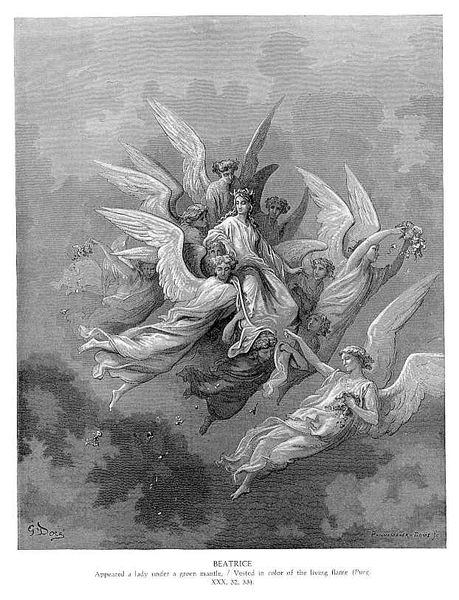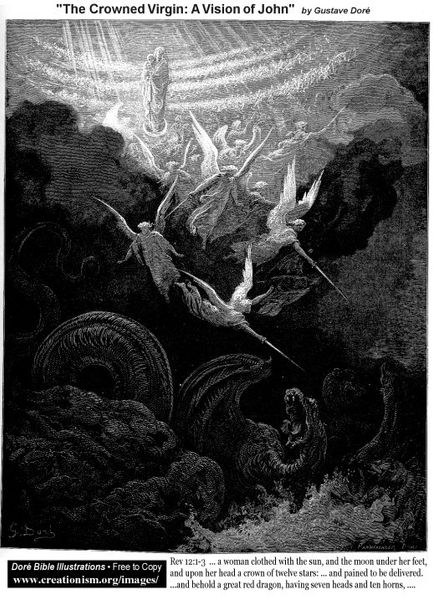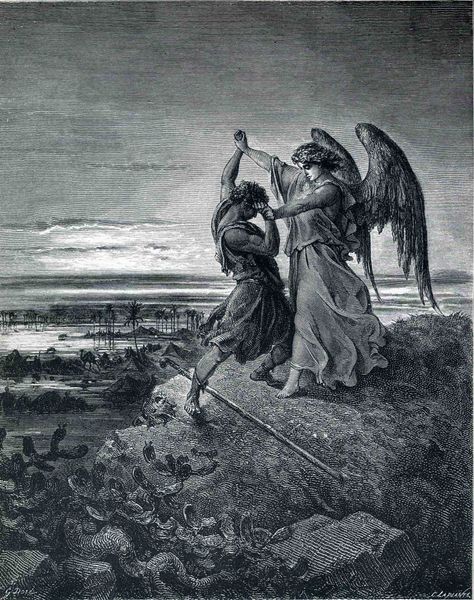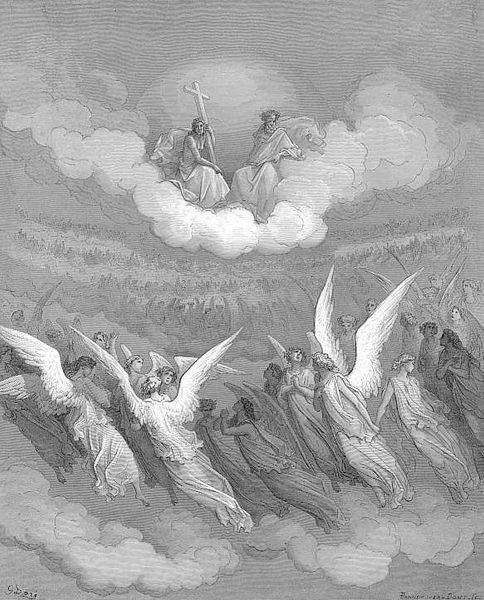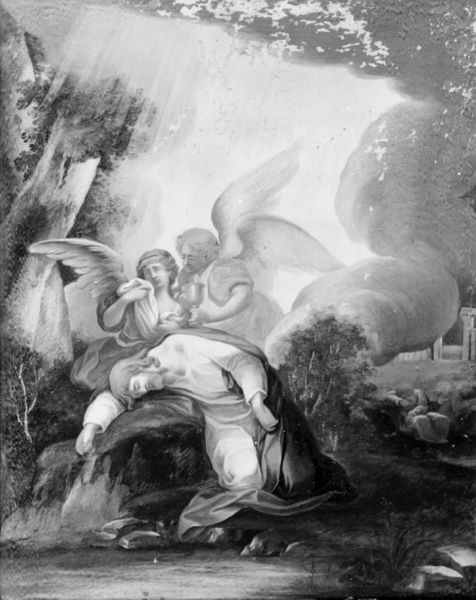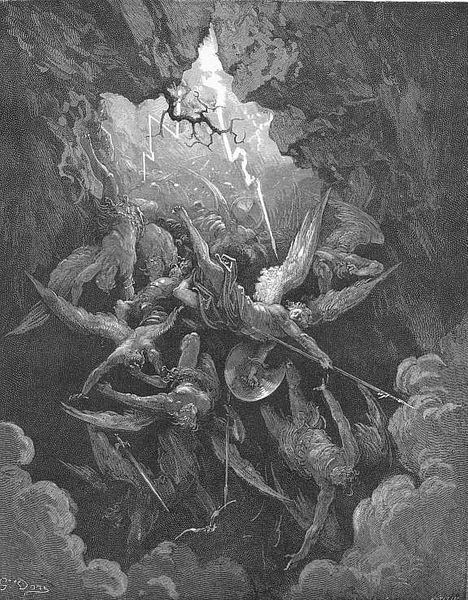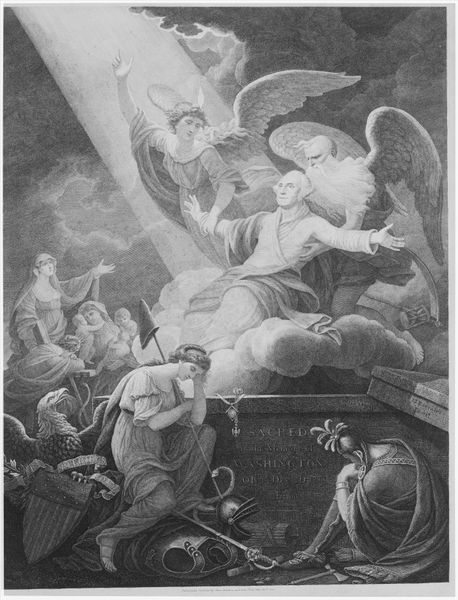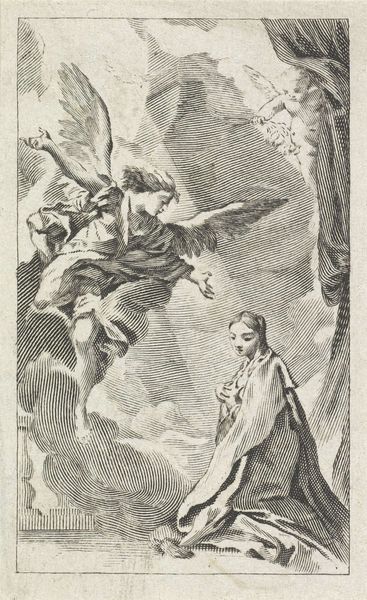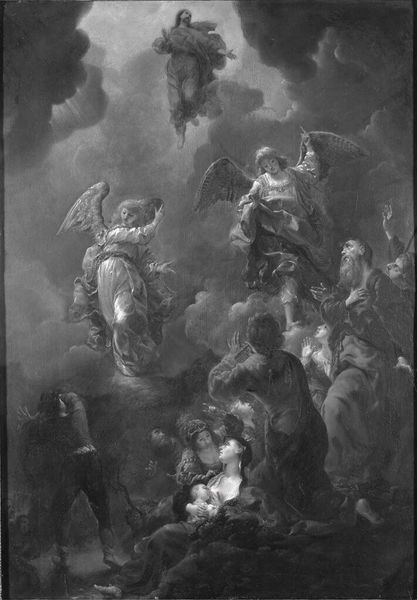
Copyright: Public domain
Editor: This is Gustave Doré's "Abdiel and Satan," from 1868. It appears to be a print, maybe an engraving? The scene is quite dramatic, angels battling amidst swirling clouds. What historical or cultural context do you think informs this work? Curator: Doré’s illustrations, particularly those depicting scenes from Milton’s *Paradise Lost*, reflect the 19th-century fascination with grand narratives and the sublime. Consider the power dynamics being visually constructed here. How might this depiction of heavenly conflict be understood in relation to, say, Victorian-era social hierarchies and anxieties about societal order? Editor: So, it's not just about the biblical story, but also about reflecting the social and political climate of the time? The rigid social structures of the time. Curator: Precisely! The institutional framework of the art world also plays a role. These prints were widely circulated and consumed, making them accessible to a broad audience beyond the elite. In a way, they democratized access to high art, although, of course, Doré’s fame was cultivated through the established art market. Have you considered how this image’s wide circulation may shape and normalize certain power structures or gender roles? Editor: That makes a lot of sense. It's like he's using a classical narrative to comment on contemporary issues through visual allegories in mass-produced media. Curator: Exactly. And consider, for example, how his works were distributed - often accompanying literary classics in widely available illustrated editions. It would interesting to consider how that access shapes what is deemed popular or not? How images like this shaped cultural narratives at the time, and possibly, still do? Editor: Wow, I never considered how accessible art impacts how we interpret it. Thanks for helping me think beyond the obvious! Curator: My pleasure! It is fascinating to delve into those complex relationships between the artwork, the artist, and the viewer, isn't it?
Comments
No comments
Be the first to comment and join the conversation on the ultimate creative platform.

